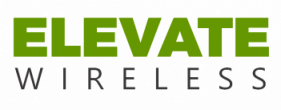It’s no question that various levels of network connectivity can bring significant savings to an agency. Understanding how good connectivity produces added efficiency, reliability, or additional insight can highlight areas of needed improvement in a system and allow an agency to determine areas of restructuring and added support. This can also bring to light areas of unrealized weaknesses and opportunities to save costs in various ways.
The costly risk of failure –
Before talking about the money-saving effects of good connectivity, let’s discuss the costly issues that can result from bad or unreliable connectivity and what that means for your bottom line.
Loss of connectivity results in significant expenses to any organization, as it generally requires significant man hours due to staff work onsite, not only to resolve the problem, but also to do the work normally done through the networked system. Especially since agency sites can be extremely remote, this can really add up in terms of loss of time, labor costs, fuel, not to mention risk of liability and loss of data.
Unreliable connectivity also triggers alarms, which can lead to emergency work by staff. This often leads to overtime hours, specialized personnel and the potential risk of union violations in some cases. This can also violate certain contracts, resulting in penalties on job sites and shut downs. These are all areas no one wants to find themselves. Minimizing this risk is essential to maintaining a reasonable, predictable budget, without any unpleasant surprises.
Good connectivity saves big –
With good connectivity comes better granularity of data. The more data that can be collected to accurately reflect what’s occurring in real time, the better capable agencies are in more accurately determining and understanding costs and how to charge for delivery of utilities and services. Issues and spikes will also be more easily identifiable, alerting agencies to potential issues and possible maintenance or repair problems.
Connectivity can also allow for telematics data on equipment, providing information on the equipment health and possibly alert the user of pending maintenance or service requirements. This allows agencies to work preventatively to change settings when needed or update when necessary, making it a proactive versus reactive approach and much more cost effective.
Reliable connectivity allows for a smoother, more productive work environment, without downtime and emergency attention. This makes for happier staff, where employees can be focused on more developed, long-term tasks versus those employees needing to drop everything and respond to emergency work.
